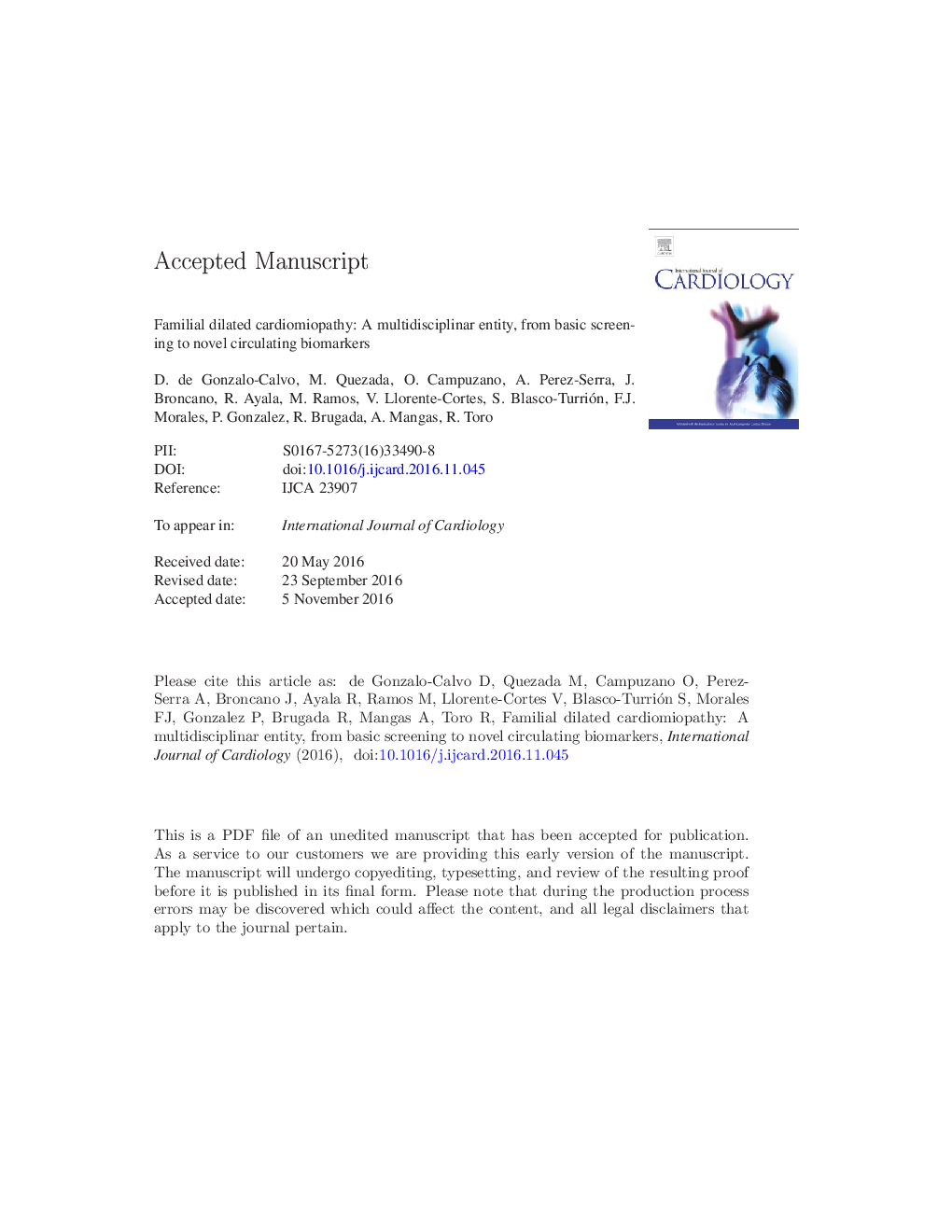| Article ID | Journal | Published Year | Pages | File Type |
|---|---|---|---|---|
| 5605542 | International Journal of Cardiology | 2017 | 49 Pages |
Abstract
Idiopathic dilated cardiomyopathy has become one of the most prevalent inherited cardiomyopathies over the past decades. Genetic screening of first-degree relatives has revealed that 30-50% of the cases have a familial origin. Similar to other heart diseases, familial dilated cardiomyopathy is characterized by a high genetic heterogeneity that complicates family studies. Cli'nical screening, 12-lead electrocardiogram and transthoracic echocardiogram are recommended for patients and first-degree family members. Magnetic resonance also needs to be considered. Genetic technologies have become fundamental for the clinical management of this disease. New generation sequencing methods have made genetic testing feasible for extensive panels of genes related to the disease. Recently, new imaging modalities such as speckle-tracking, strain and strain rate or magnetic resonance, and circulating biomarkers such as non-coding RNAs, have emerged as potential strategies to help cardiologists in their clinical practice. Imaging, genetic and blood-based techniques should be considered together in the evaluation and testing of familial dilated cardiomyopathy. Here, we discuss the current procedures and novel approaches for the clinical management of familial dilated cardiomyopathy.
Keywords
Related Topics
Health Sciences
Medicine and Dentistry
Cardiology and Cardiovascular Medicine
Authors
D. de Gonzalo-Calvo, M. Quezada, O. Campuzano, A. Perez-Serra, J. Broncano, R. Ayala, M. Ramos, V. Llorente-Cortes, S. Blasco-Turrión, F.J. Morales, P. Gonzalez, R. Brugada, A. Mangas, R. Toro,
